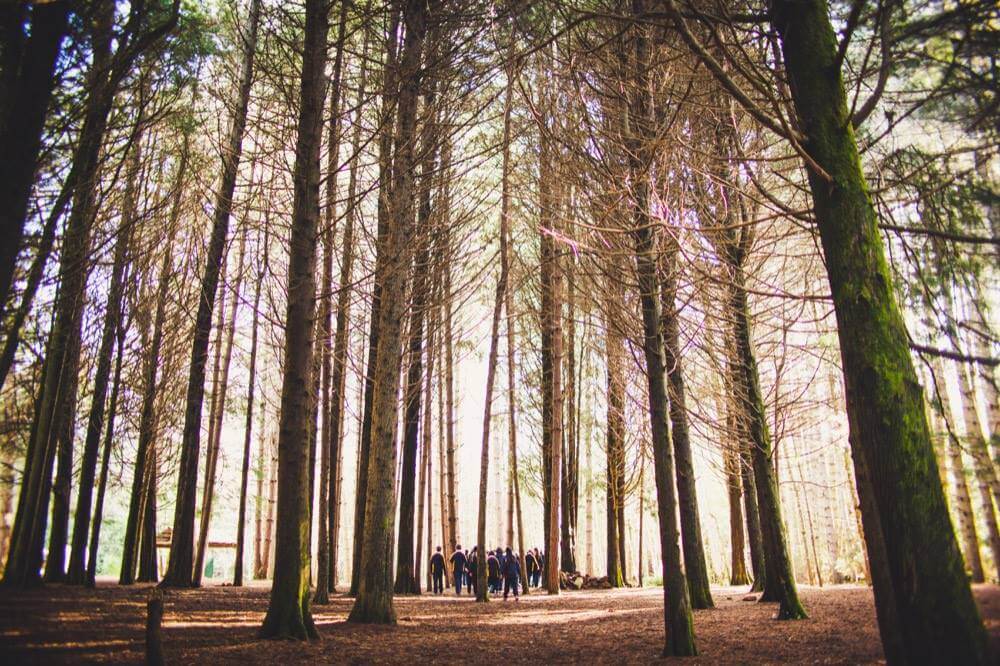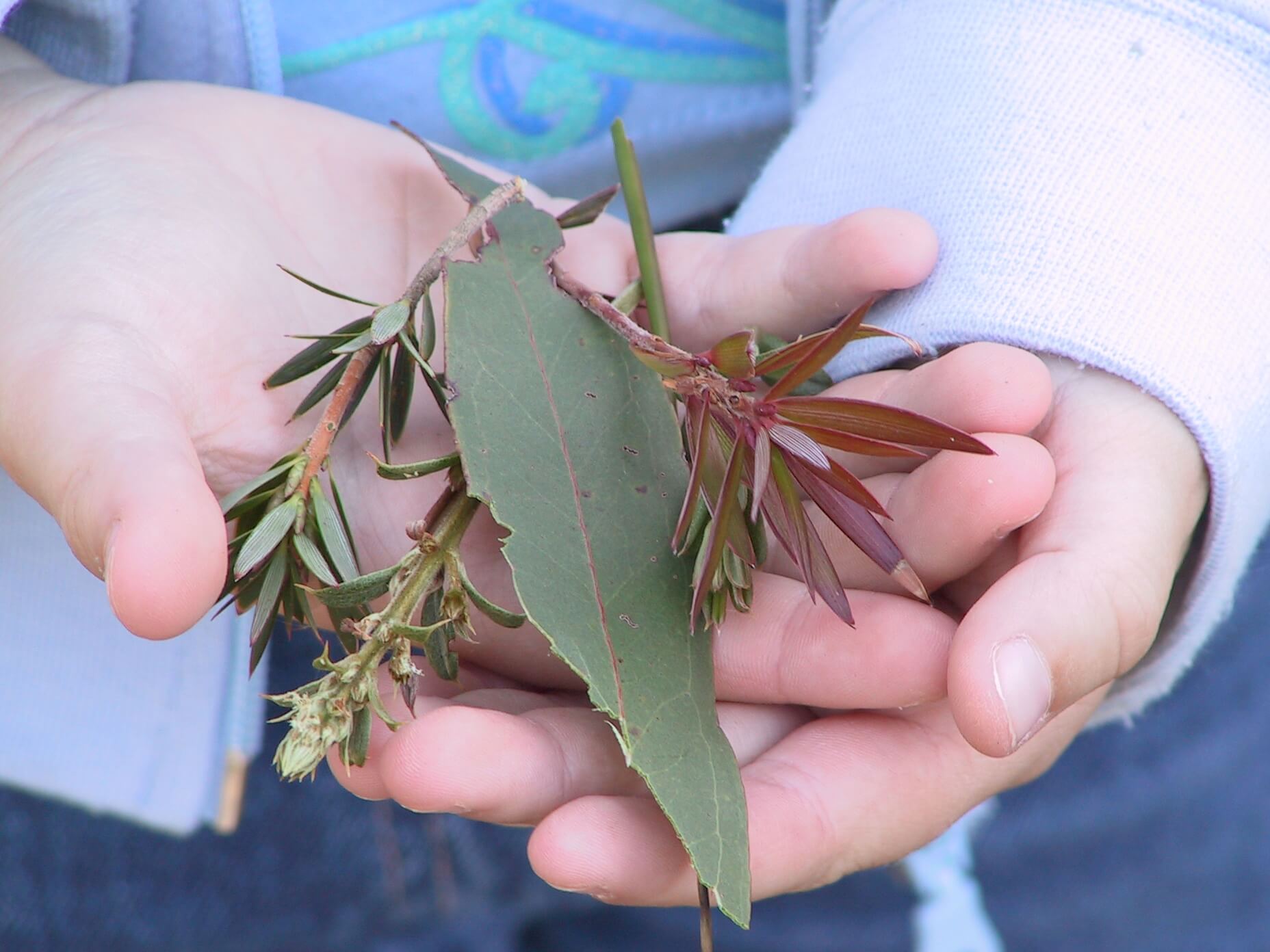
Year 1/2
The 1/2 Forests Alive program is primarily an incursion model, with excursions possible subject to site suitability. This program provides students with an opportunity to get hands-on with parts of the forest, activate their five senses and understand the importance of trees in forest ecosystems.
While investigating the way living things grow and change students will identify the connections among living and non-living things in a forest. They will learn about the features of trees and their role in meeting the needs of other living things. Students will work together to identify the natural and constructed features of a place and look at the ways people engage with and look after the environment.
Curriculum Links
Science
Observe external features of plants and animals and describe ways they can be grouped based on these features (AC9SFU0)
- Use forest plant samples to observe and identify similarities and differences, and sort plants into groups.
- Use role-play to explore how trees grow and the functions of their different parts.
- Identify the parts of a tree and the role each feature plays, using visual stimulus and natural materials to build models.
- Identify different plant species, using the Treeflip, observing their features, such as, bark, leaves, gum nuts.
Explore the ways people make and use observations and questions to learn about the natural world (AC9SFH01)
- Use four of the five senses (see, hear, touch, smell) to make observations about forest specimens.
- Use tools such as a magnifying glass to make observations about forest specimens, including leaf litter.
- Ask questions about forests, what lives there and how living and non-living things interact.
Identify the basic needs of plants and animals, including air, water, food or shelter, and describe how the places they live meet those needs (AC9S1U01)
- Act out the life cycle of a tree within a forest, identifying what the basic needs of all living things (air, water, food, shelter – or space to grow).
- Explore the different habitats within a forest, and how a forest meet the needs of a variety of living things.
- Examine the role a tree plays in meeting the needs on other living things in the forest.
Describe how people use science in their daily lives, including using patterns to make scientific predictions (AC9S2H01)
- Investigate leaf litter and make observations about the damage present on different leaves. Identify patterns, group those that are alike and make scientific predictions about the age of leaves and what could cause different damage patterns.
The natural, managed and constructed features of local places, and their location (AC9HS1K03)
- Identify the managed, natural and constructed features of local spaces (from school grounds to forests).
How places change and how they can be cared for by different groups including First Nations Australians (AC9HS1K04)
- Identify how a forest, tree or local space can be cared for by different groups.
identify how familiar products, services and environments are designed and produced by people to meet personal or local community needs and sustainability (AC9TDE2K01)
- Identify multiple ways that forests meet community needs.
- Explore natural and managed environments.
- Investigate the different ways that people use wood products.
- Understand the way science influences sustainable forest management.
Explore how plants and animals are grown for food, clothing and shelter (AC9TDE2K03)
- Understand the basic needs of plants.
- Identify products designed and produced from plants.
- Identify how forest animals and plants can provide used for food, clothing and shelter.
Thank you for choosing to explore the forest with a Forest Education Foundation excursion. You will find everything you need to know to plan and pack for your trip. Please ensure you have completed the Excursion Acknowledgement/Medical Information form at least 3 days PRIOR to your excursion.
- What is the purpose of your field trip? We can develop your program to suit your learning objectives and meet your curriculum needs. Please let us know anyway we can adapt the program to suit your students’ interest and learning needs.
- Please notify us about any student with special needs. We can adjust your program to ensure everyone is involved.
- Take advantage of our bus subsidy and fill your bus. Why not take two classes? The FEF has two teachers so taking two groups is not a problem, depending on the program.
- In order to make your excursion planning easier the FEF has developed a Risk Assessment Plan. This document is written by the qualified teachers of the FEF. For a copy of the risk assessment document click here.
- Bring along parent helpers. Extra assistance is always appreciated. We will get any parent helpers actively involved in the program.
- Organise your students into small groups 4-6 groups depending on the class size.
- Ensure your students are supervised at all times.
- Prepare for all-weather possibility. Ensure your student have warm clothes, comfy shoes and wet weather gear.
Have fun! The forest is an amazing place. Get involved and enjoy the adventure with your students.
Find a tree in your schoolyard and make some observations. Give the students a few minutes to use their sense of smell, touch, hearing, and explore the space.
Guiding Questions:
- What do we know about trees?
- Do all trees look the same?
- Close your eyes and lay down, what do you hear? What do you smell?
- What do we notice about the different parts of the tree?
- What words can we use to describe our tree?
- What role might a tree play for other living things?
You might like to complete an observational drawing of your tree, sketch its leaves or take a bark rubbing.
- Imagine that you are a tree in a forest and write a story about the interesting things that happen to you and around you.
- Create a forest diorama, remembering to include all the different features of the forest.
- Think about the ways a tree helps to meet the needs of other living things in the forest.
- Explore the parts of a tree and the role they play in helping a tree survive. Access the interactive here.

